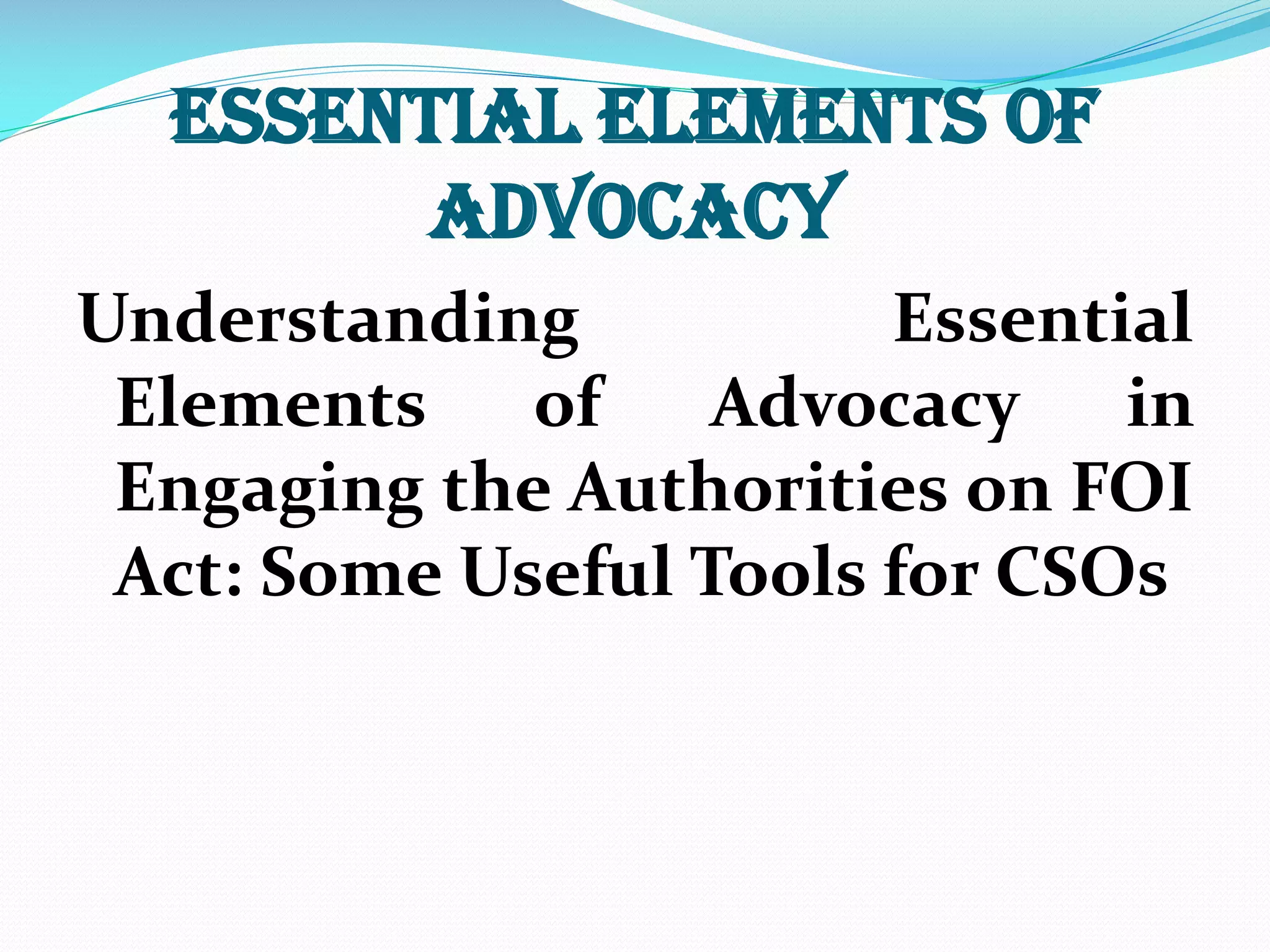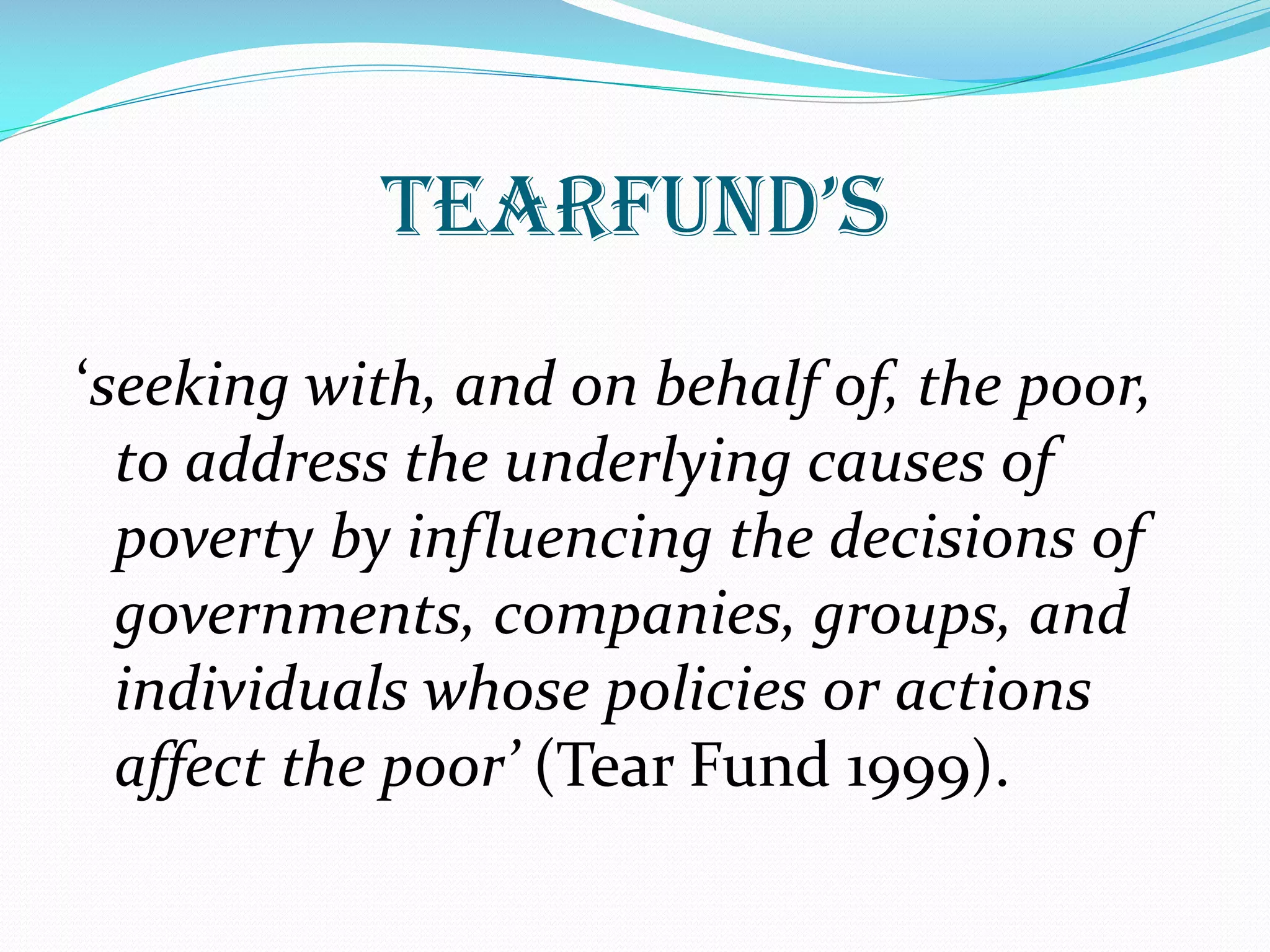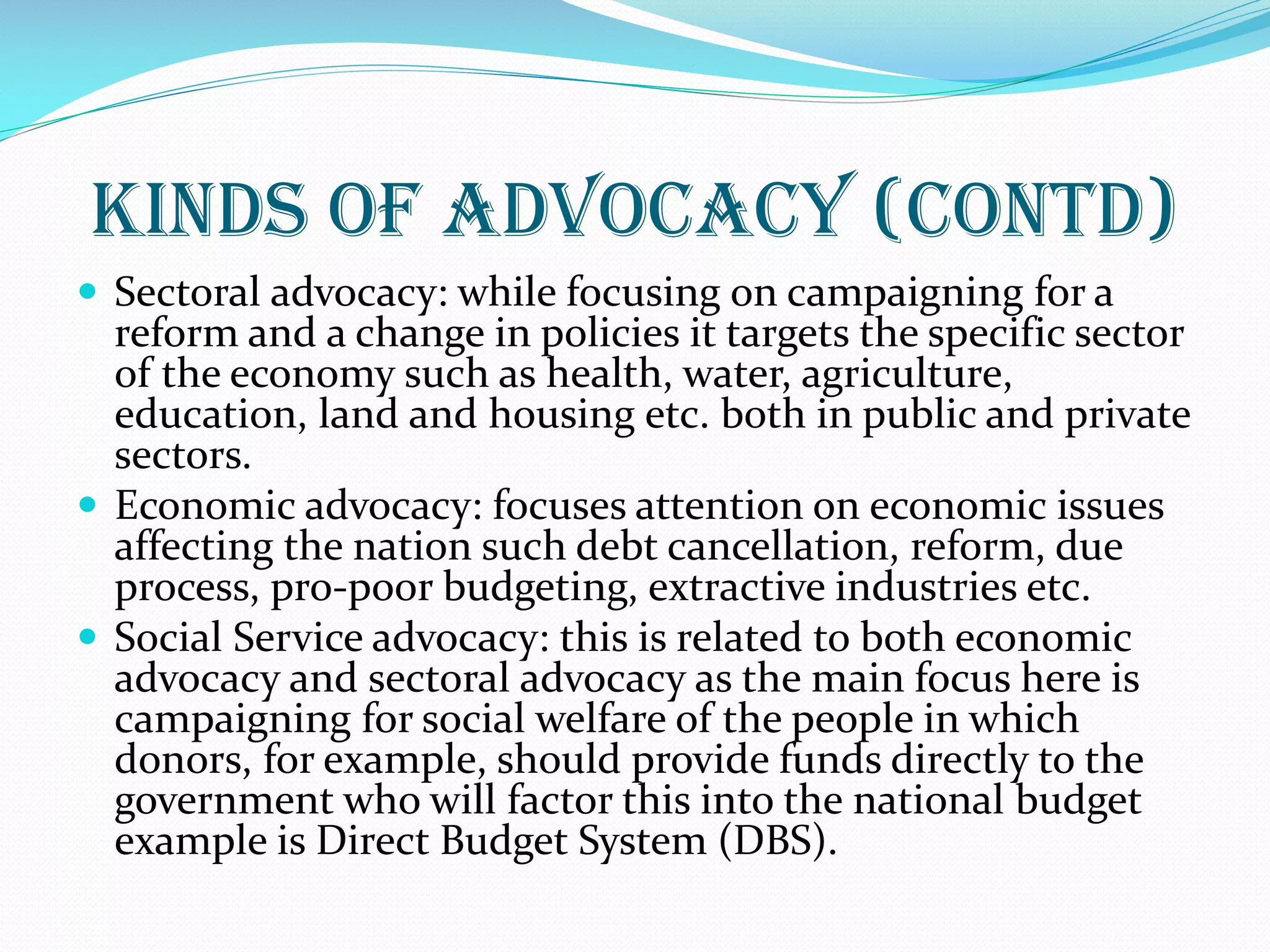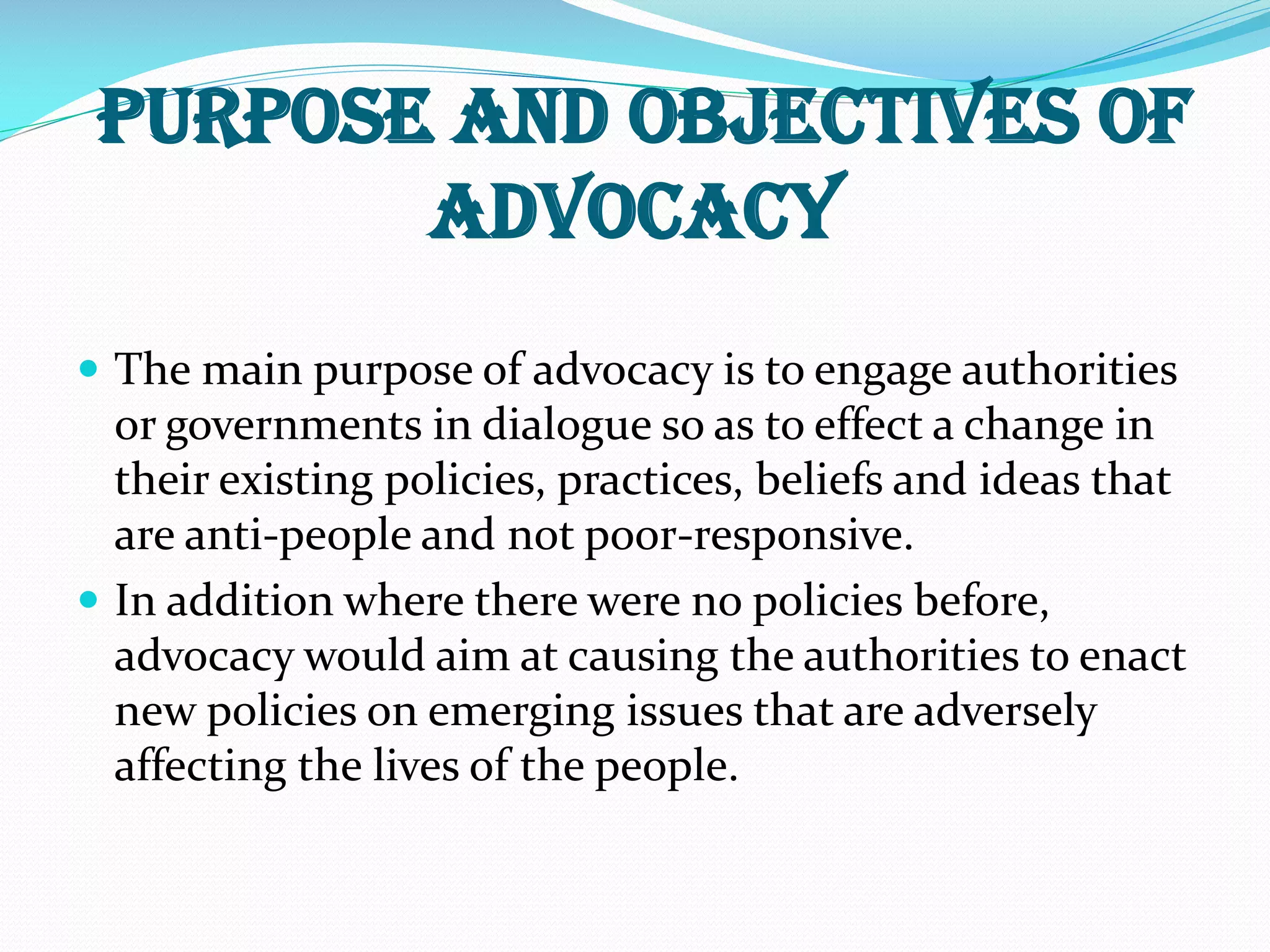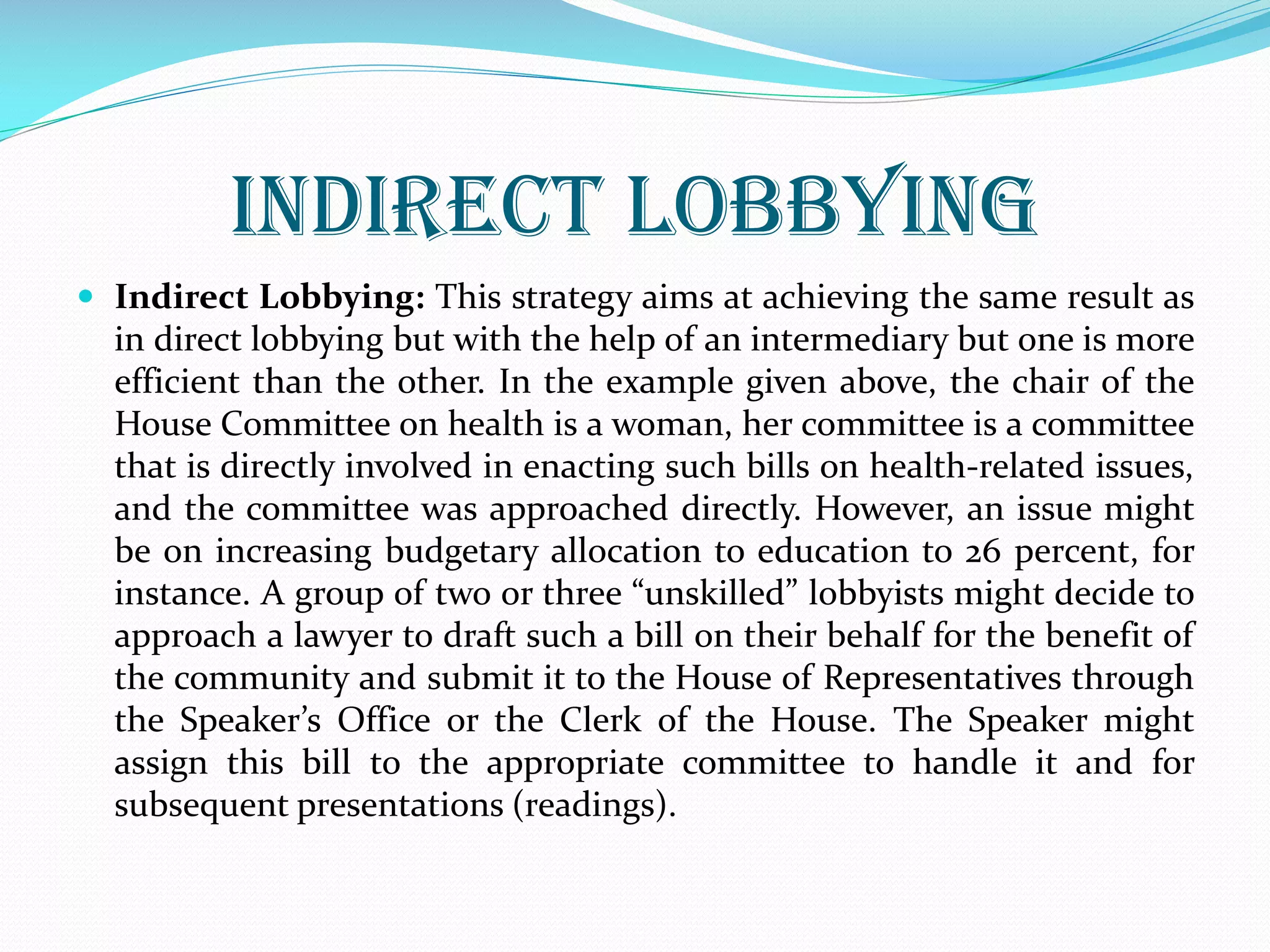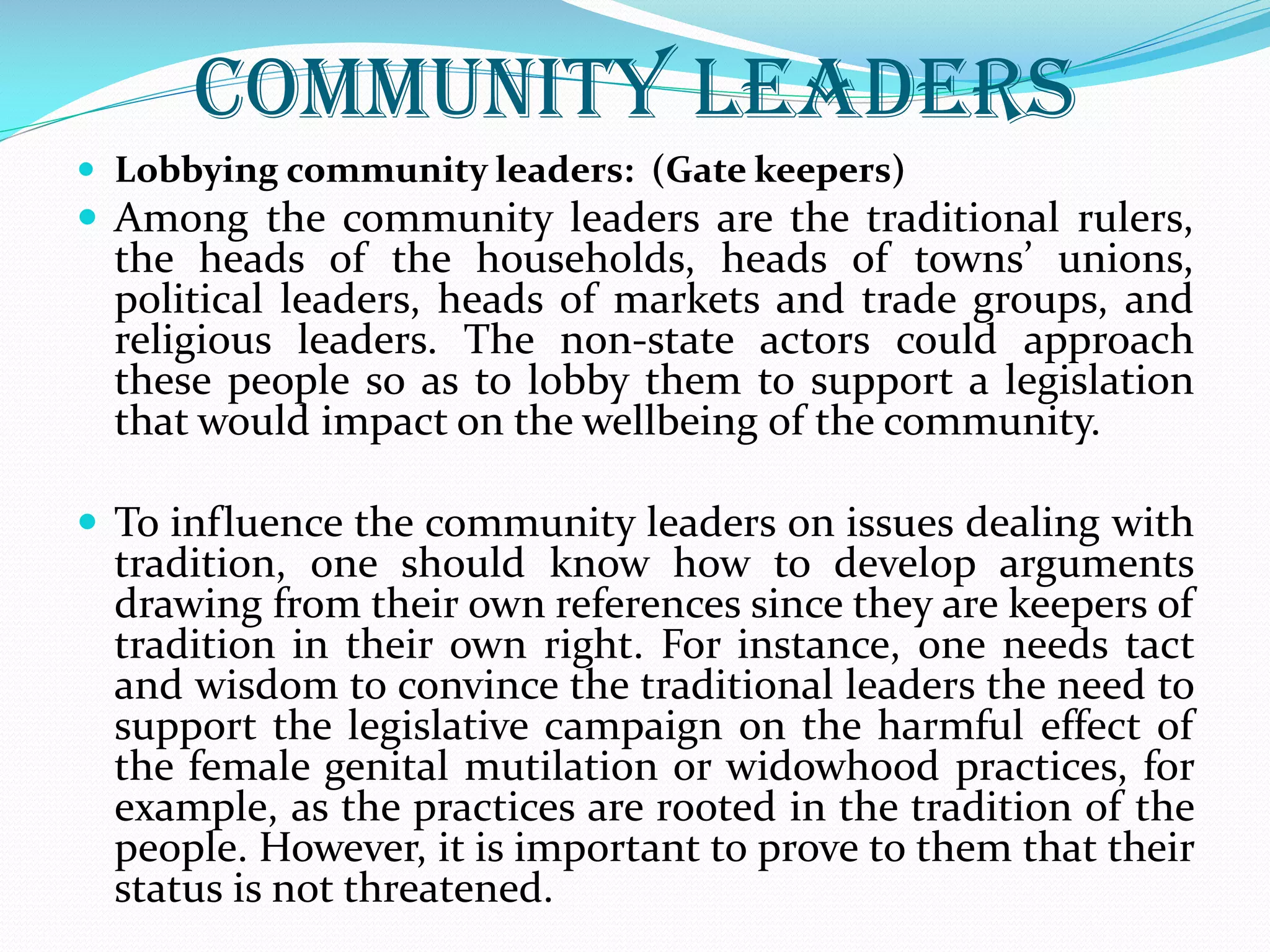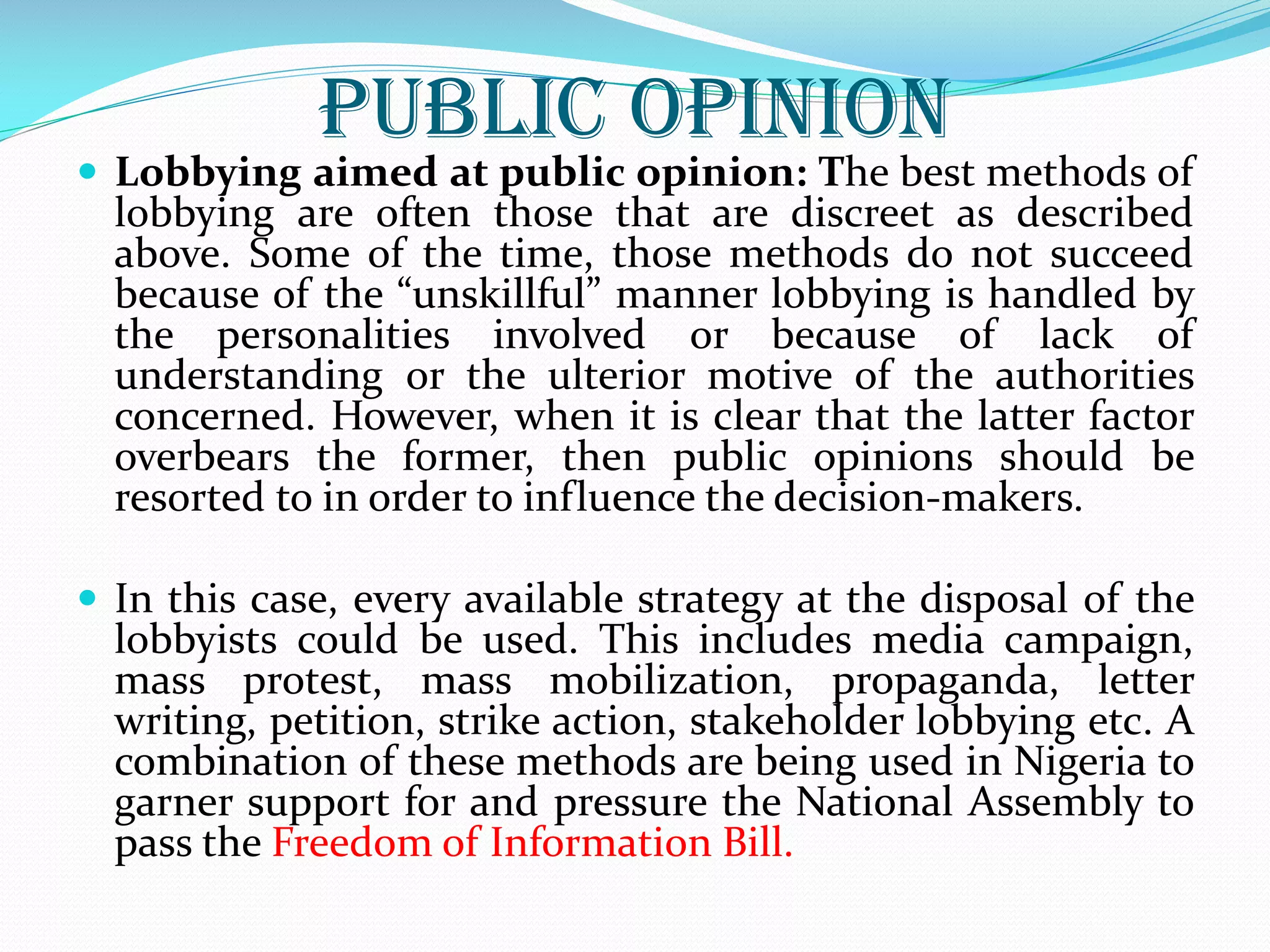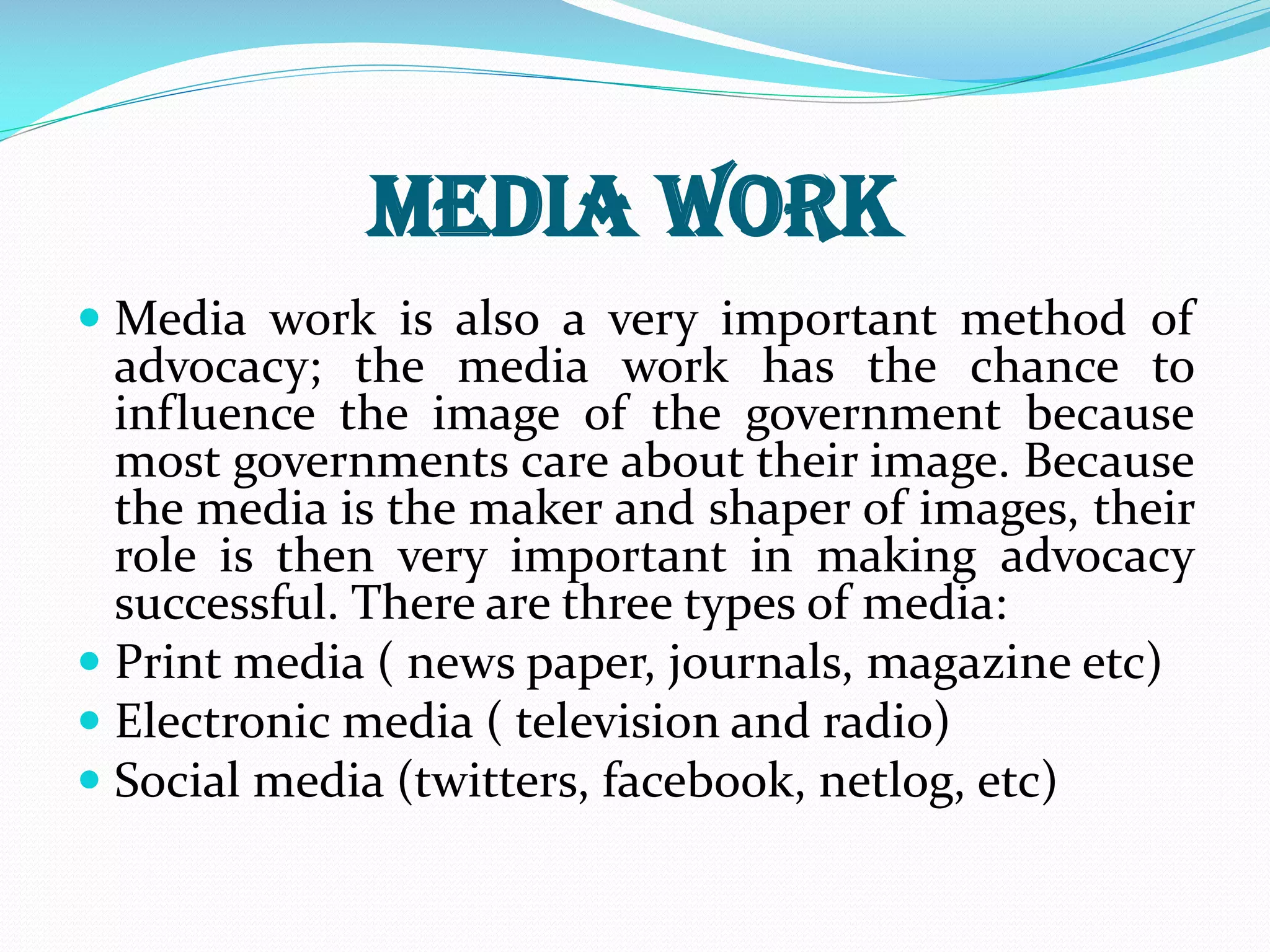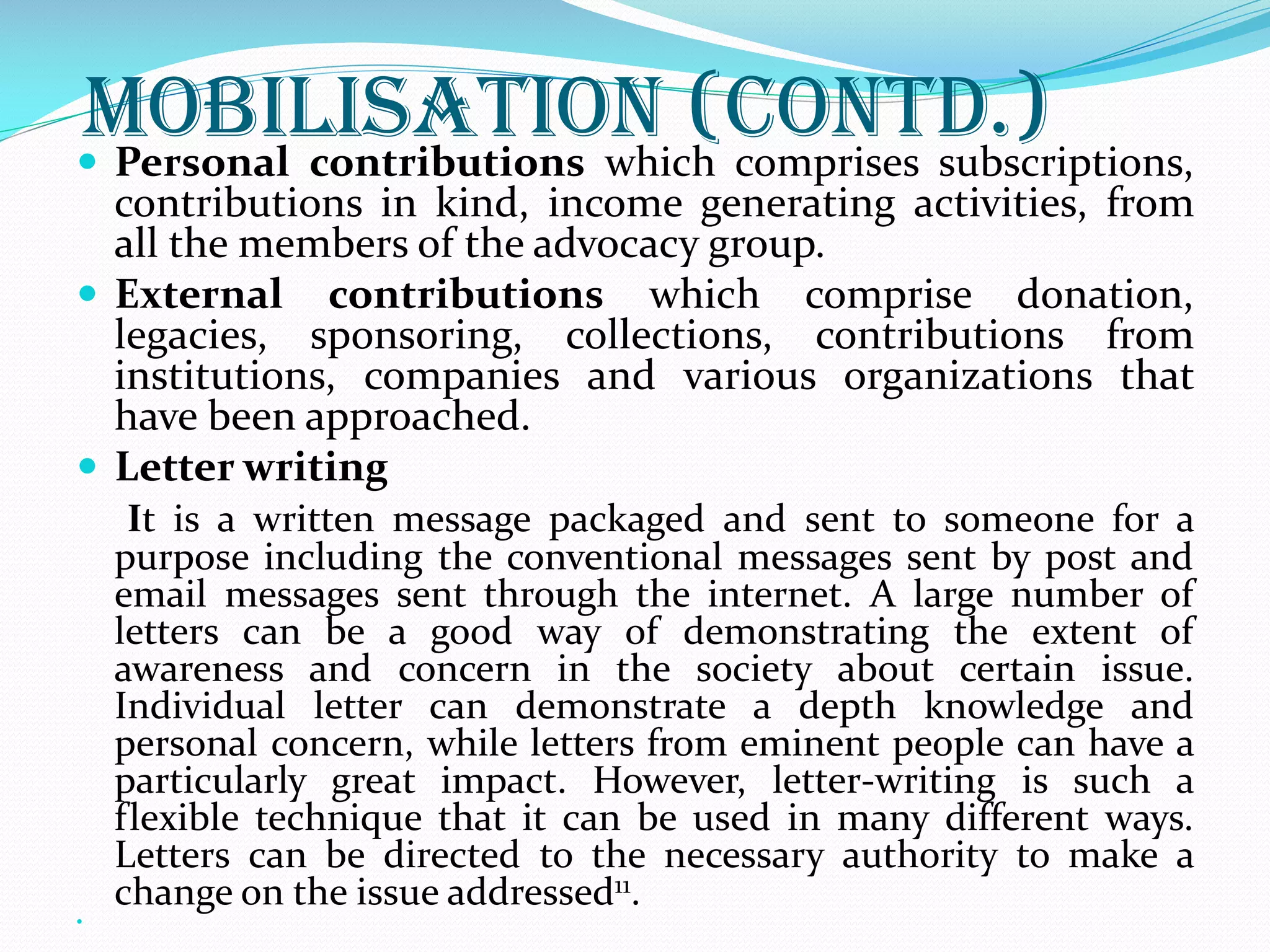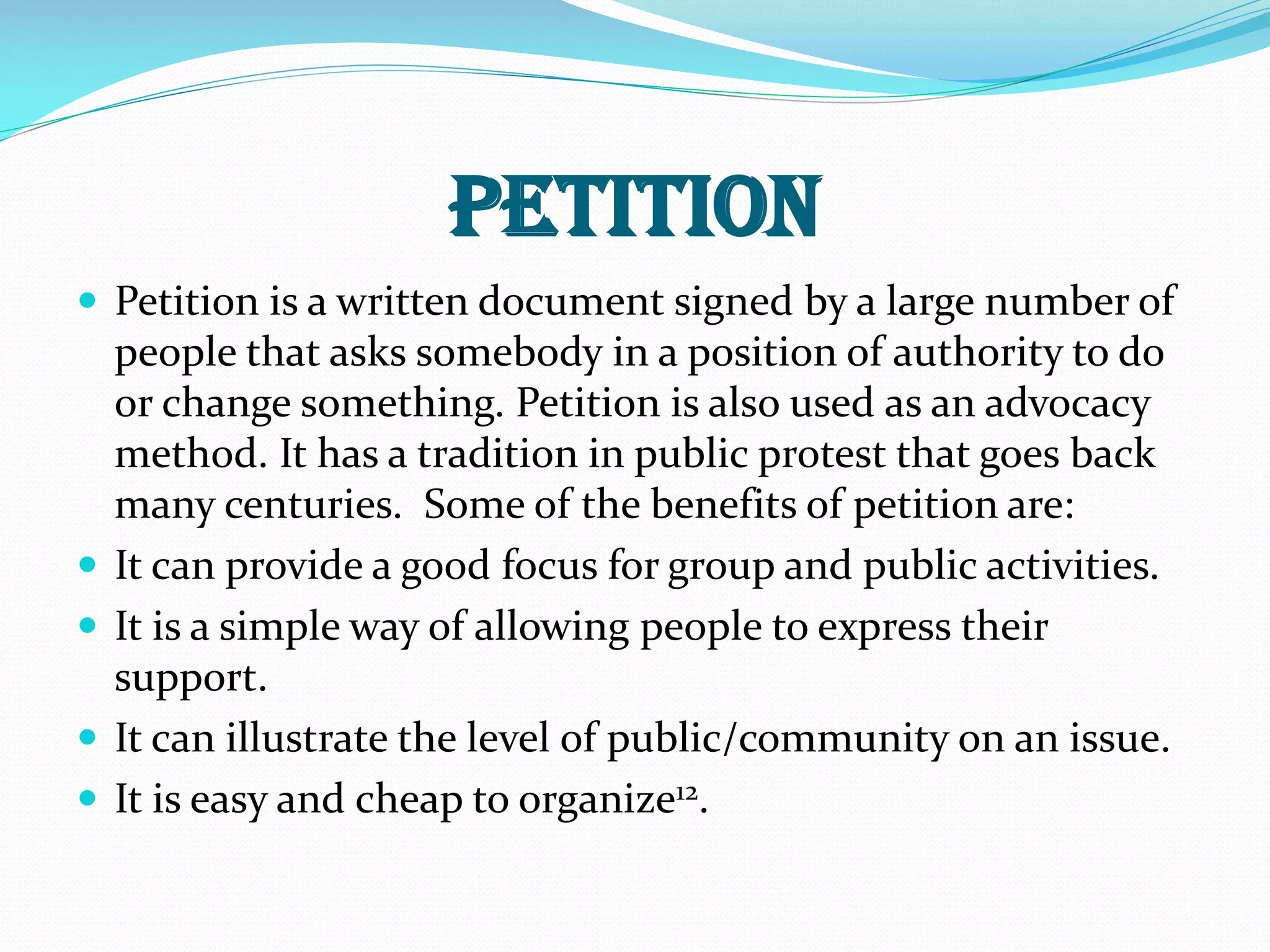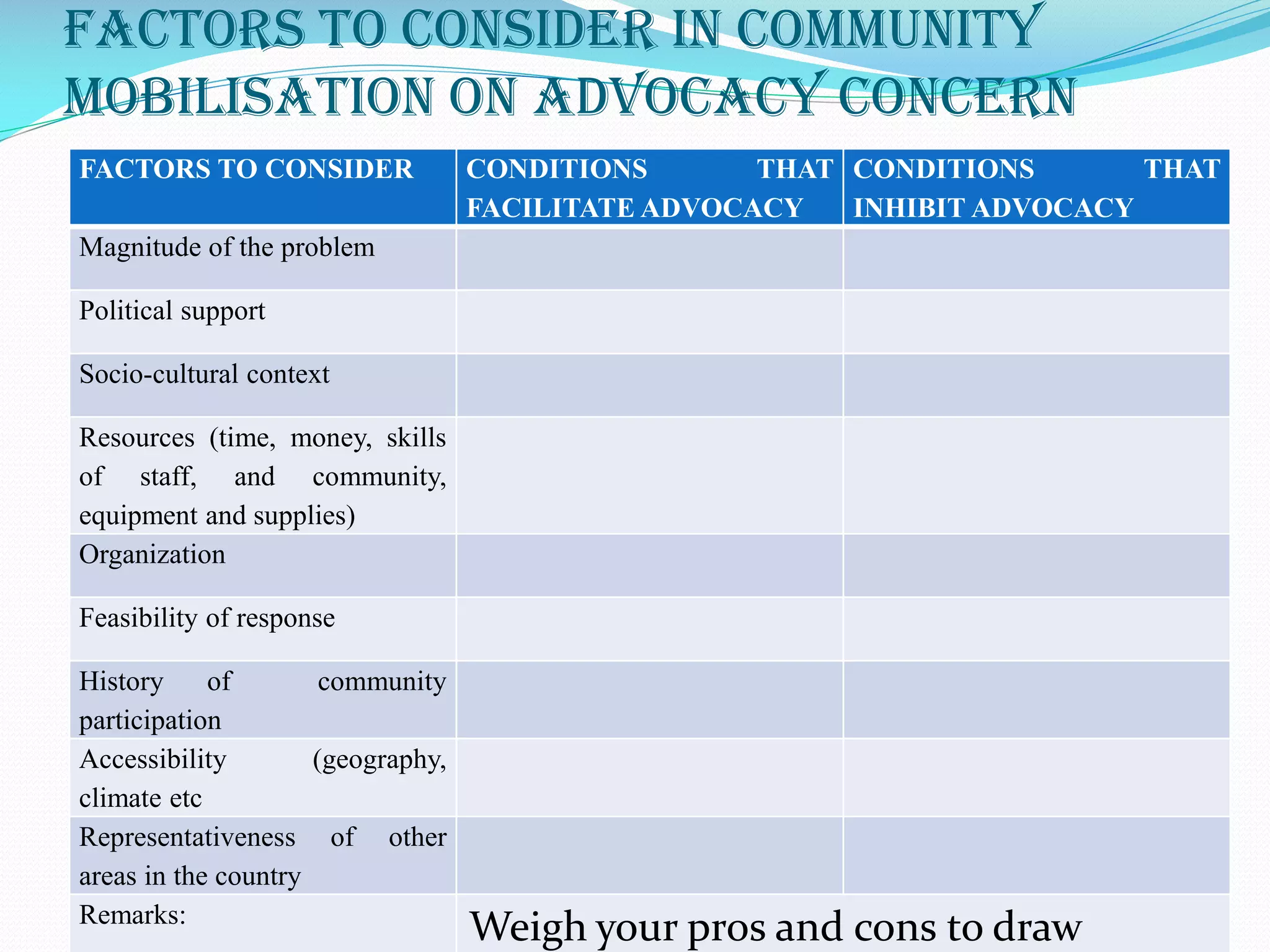This document outlines essential elements and strategies for advocacy. It defines advocacy and distinguishes it from related concepts like noise making and agitation. The document discusses the purpose and objectives of advocacy, as well as the qualities needed in an advocate. It examines stakeholders that may support or oppose advocacy goals. Methods of advocacy discussed include lobbying, collaborating with partners, using media, and campaigning. Direct and indirect lobbying strategies are presented, as well as how to lobby community leaders and influence public opinion.


